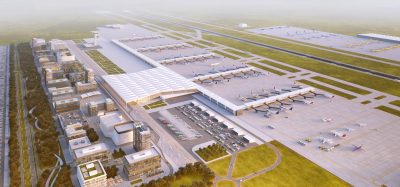Fixing the aviation value system
Posted: 16 March 2005 | Alexander ter Kuile Secretary General, CANSO (Civil Air Navigation Service Organisation) | No comments yet
Liberalisation of sections of the aviation industry has encouraged development, but with the effectiveness of the ATM sector continuing to be hampered by government control, CANSO argues that a clear separation between the service providers and the regulators would benefit all.
Liberalisation of sections of the aviation industry has encouraged development, but with the effectiveness of the ATM sector continuing to be hampered by government control, CANSO argues that a clear separation between the service providers and the regulators would benefit all.
December 2004 saw the 60th anniversary of the Chicago Convention. Although the occasion received little public fanfare, the Convention, and the subsequent creation of ICAO, created aviation institutions that have remained largely unchanged to this day. However, while there have been few institutional changes, we do not need an aviation expert to point to the enormous developments that have taken place in the aerospace and airline industries.
The airline market has transformed itself over the past twenty years. Deregulation has lowered prices and increased frequencies and standards. The days when the size of a transatlantic cheese sandwich was stipulated by an international agreement are thankfully behind us.
Progress has been driven by liberalisation of the industry, particularly in the areas of service standards, pricing and ‘duopoly’ route agreements; such agreements normally allowed only the ‘flag carrier’ of each state to operate a route. Governments have, on the whole, allowed competition to flourish.
However, whenever liberalisation is affected competition suffers. The US Chapter 11 defies market forces by allowing unsuccessful airlines to continue flying. These airlines put pressure on aviation infrastructure which is simply not supported by commercial demands or economic benefit. On the other side of the Atlantic, the European Union Commission realised several years ago that governments should be prevented from favouring their flag carriers, particularly by way of bilateral route negotiations. Progress continues to be made by the Commission to ensure that such market distorting favouritism becomes history. Nonetheless, the evidence suggests that the less national governments interfere, the more the aviation market thrives.
The same can be said of aerospace. Take the new generation of aircraft being developed by Airbus and Boeing. The companies offer an enormous range of models and ‘made to measure’ options. This is not surprising; their customers want the highest standards, specific options and the lowest prices. Although Boeing and Airbus may well differ in their forecasts of the new aviation environment, we can be certain that the 787 and A380 will surpass all aircraft developed before. These new aeroplanes are being manufactured with customers – not governments – driving the process forward.
While spectacular developments have been made in the aerospace and airline industries, major obstacles remain in the regulatory environment. This lack of regulatory harmonisation prevents our industry from getting the full benefits of liberalisation. Nowhere is this clearer than in the development of Air Traffic Management (ATM). For while the aerospace and airline industries have largely been relinquished from government control, ATM has not. The degree of national regulation of ATM remains nearly as great today as it did 60 years ago. But why does this matter?
The Aviation Value System
Two decades ago Michael Porter recognised the importance of optimised Value Chains within a Value System, in designing, producing, delivering and supporting a product or service. Porter’s ideas, which are closely followed by successful multinationals, are as true to air transport as to any other industry. Whether we work in ATM,` aerospace, airlines or airports, we ignore the Value System at our peril.
Great developments in the aerospace and airline industries alone are insufficent to fully develop the aviation industry. Governments have maintained regulation of important sectors of the Aviation Value System; these sectors, in the hands of national bureaucracies, lack the dynamism required to develop an efficient industry. Because of this, ATM has historically been a business that is slow to respond to the demands for sufficient capacity or customer focus. As a result, the Aviation Value System remains suboptimal and inefficiencies are maintained.
It became clear in the 1990s that institutional change was required to meet the demands of a rapidly changing ATM environment. Until then, the ATM sector remained regulated by national control with all Regulatory and Service Provision functions carried out under the same roof. The way in which ATM costs were recovered provided no incentive for operational efficiencies. As a result, frictions remained within the Aviation Value System. This resulted in calls from the airlines and the travelling public to urgently address the sector’s underperformance. The solution was to bring ATM ownership and regulation in line with the other sectors of the global Aviation Value System.
In order to create a more efficient and dynamic ATM sector, for the benefit of the entire aviation industry, many countries across the world have adapted their ATM regulatory environments. By creating independently managed Air Navigation Service Providers (ANSPs), a separation of Regulation and Service Provision has been established. These ANSPs – to the benefit of all in the Aviation Value System – have thrived. The ANSPs have shown themselves to be both dynamic and responsible. Further, they have proved to be reliable, efficient and, most importantly, good employers. Far from create tension in the Value System, the creation of independent ANSPs has enhanced it.
But while 2005 is a vast improvement on 1995, today’s ATM situation could still be described as suboptimal. Unfortunately, each country has gone about making these changes in its own particular way. Both international and national regulations continue to restrict the ability of the ATM sector to respond to market forces. As a result, the Aviation Value System, with its dynamic aerospace and airline sectors, remains disrupted. System fragmentation continues to occur and cost inefficiencies remain relatively high. This is bad news for the entire Value System, particularly when oil is near $50 per barrel.
So, while some aviation sectors, such as aerospace and airlines have benefited from the separation of the regulator and the provider, the ATM industry continues to see a fragmented approach.
This picture of fragmentation has been acknowledged by ICAO. Indeed, ICAO has recognised that this problem needs to be addressed. Only then will we be able to reap the potential benefits of the seamless global ATM offered by new digital and satellite technology, known as CNS—Communications, Navigation and Surveillance.
Routes into the future
ICAO’s Global Operational Concept, and IATA’s ‘One Sky’ initiative, lay the foundation for the realisation of a long term ATM vision. Other progress has also been made. For example, over the past months there was further implementation of the Reduced Vertical Separation Minimum, allowing aircraft to operate efficiently while maintaining, indeed enhancing, safety. In fact such developments have not only saved enormous sums of money, they have also greatly reduced emissions of carbon dioxide. Indeed Airways New Zealand (an ANSP CANSO member), has been at the forefront of putting forward the new ATM environment in which national borders largely disappear.
Together with the Single European Sky (SES), ICAO’s and IATA’s plans are firm steps in the right direction of making ATM the best possible fit in the Aviation Value System. Indeed, European ATM provides an enlightening example of ATM development.
The SES, which is a continually evolving project, aims to move from the traditional national approach to airspace organisation and management, towards a more integrated European perspective. Prior to the SES, Europe had a ‘classic’ ATM regulatory environment based on national borders. As a result, at the heart of the SES is a stipulation for the separation between regulation and service provision. It remains worth noting though that the fragmented system based on national borders was acknowledged in Europe as far back as 1961.
It was in the 60’s that in order to coordinate an ever busier and more complex European airspace, the national authorities created a dedicated Agency for Cooperation for the Safety of Air Navigation. The founding member states named this new institute Eurocontrol. Initially Eurocontrol was to specialise in research and development, and the creation of new methods and tools for the European ATM environment.
In 1969 Eurocontrol opened the Luxembourg training centre. Following this, in the early 1970’s Eurocontrol became ‘functional’ by opening the Route Charges Office, a centralised way of collecting flight charges for Eurocontrol Member States. Shortly afterwards, the Upper Area Control Centre in Maastricht opened to control flights above 26 000 ft over Belgium, Luxembourg, the Netherlands and northern Germany. A similar system for Upper Area Control for central and eastern Europe is currently being developed. In the late 1980s Eurocontrol established the Central Flow Management Unit (CFMU) which optimises European airspace. These progressions enhance and support a better coordinated and more efficient sky over Europe.
Commercial concerns
However service provision functions are, essentially, commercial activities. Subsequently, for the Aviation Value System to fully succeed, it is vital that service provisions, such as Upper Area Control, are separated from regulation. There is the real danger that, despite the enormous progression of European ATM, we fail to ensure the complete separation of regulator and provider. This will inevitably lead to tension and inefficiency. Without such a separation, disruption to the Value System may well occur.
Moreover, the European aviation industry may not be well served by a different Aviation Safety Authority in each state; such a system is currently being implemented. It is important that a harmonised regulatory framework exists for all airlines, airports, and ATM.
Finally, compared to their non European partners, European ANSPs have little say over key elements of their service provision, such as flow management, the recovery of charges and some of their future programmes. ANSPs and airlines need to play a greater role in the governance of pan-European service provision.
Today’s aviation environment is unrecognisable to the cold December day when the Chicago Convention was signed. Enormous progress has been made. But we will not fully realise the benefits of the Aviation Value System unless we look at the institutional environment of today and tomorrow from a new, harmonised and commercial perspective. Nowhere in the aviation industry is this more apparent than in the provision of Air Traffic Management.
CANSO was founded in 1998 to represent the interests of ANSPs worldwide and currently has a membership of 38 ANSPs and 30 different aviation suppliers. CANSO Members control 81% of global air traffic and serve over 50% of the world’s airspace.
Alexander ter Kuile
Alexander ter Kuile was appointed Secretary General of CANSO in January 2001 after working as a Director in the Amsterdam office of Simat Helliessen & Eichner for 2 years. Prior to this he worked for the RAND corporation, Fokker Aircraft and KLM. Mr. ter Kuile is Co-Chairman of the European Union’s Social Dialogue on Air Traffic Management and holds a Bachelors Degree in Economic Geography from London University plus an MBA from Cranfield School of Management.
Join our free webinar: Beyond silos: How ecosystem thinking elevates the airport experience
In today’s complex aviation landscape, airports are moving beyond siloed operations to embrace a new era of collaboration. This webinar focuses on how leading airports are using ecosystem thinking to adapt, personalize, and continuously improve every touchpoint, boosting both passenger satisfaction and non-aeronautical revenue.
Date: 13 Nov | Time: 10:00 GMT
REGISTER NOW TO SECURE YOUR SPOT
Can’t attend live? No worries – register to receive the recording post-event.

















